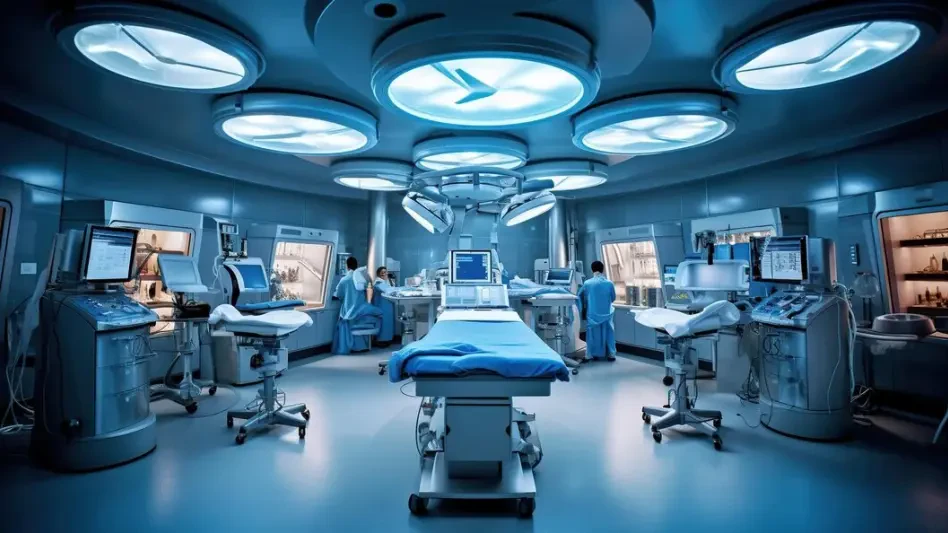I’m thrilled to sit down with Faisal Zain, a renowned healthcare expert with deep expertise in medical technology. With years of experience in the manufacturing of cutting-edge medical devices for diagnostics and treatment, Faisal has been at the forefront of driving innovation in the healthcare space. Today, we’ll dive into the fascinating world of the digital operating room (OR), exploring how technology is transforming surgical environments, the challenges of integrating complex systems, and the future of personalized care. Our conversation touches on the critical role of connectivity, cybersecurity risks, high-speed data demands, and the evolving landscape of regulatory compliance.
How would you describe the concept of a digital operating room, and what sets it apart from the traditional ORs of the past?
A digital operating room represents a complete shift from the traditional OR, which was primarily a sterile physical space focused on manual tools and direct human intervention. Today’s digital OR integrates advanced technologies like robotics, high-resolution imaging, and real-time data systems to create a connected, data-driven environment. It’s about enhancing precision, improving communication between devices and clinicians, and ultimately elevating patient safety and outcomes through seamless integration of technology.
What are some of the key technologies you see shaping the modern digital OR, and how do they impact surgical processes?
We’re seeing an incredible array of tools in digital ORs, from surgical robotics that allow for unparalleled precision to ultra-high-definition endoscopes and portable CT scans that improve diagnostic capabilities. These technologies streamline surgical workflows by providing real-time insights and reducing manual errors. For instance, robotics can assist surgeons in performing minimally invasive procedures, while 4K imaging offers clarity that helps in critical decision-making during operations.
Can you elaborate on the importance of real-time data transfer in these environments and how it supports clinical teams?
Real-time data transfer is the backbone of a digital OR. It ensures that information flows instantly between devices, clinicians, and hospital systems, enabling split-second decisions that can be life-saving. For example, during a procedure, data from imaging systems or patient monitors can be shared with the surgical team and even remote specialists for immediate input. This connectivity creates a collaborative ecosystem that enhances both efficiency and patient care.
With the digital healthcare market projected to reach over $770 billion by 2029, what do you think is fueling this explosive growth?
The growth is driven by a combination of technological advancements and a growing demand for personalized, efficient healthcare. Innovations like AI, robotics, and wearable health monitors are meeting the needs of an aging population and a healthcare system under pressure to reduce costs while improving outcomes. Additionally, the push for minimally invasive procedures and faster recovery times is accelerating the adoption of digital tools, particularly in surgical settings like the digital OR.
Wireless connectivity seems to be a major hurdle in digital ORs. Can you explain why it’s so challenging to manage in such a confined space?
Wireless connectivity in the digital OR is tricky because you have a dense cluster of devices—robots, monitors, imaging systems—all operating on different frequencies and protocols in a small area. This creates a crowded spectrum where interference can disrupt critical functions. The stakes are incredibly high; even a minor glitch could impact a surgical procedure, so ensuring reliable wireless performance is a top priority for manufacturers and hospitals alike.
Cybersecurity is another growing concern in healthcare. What makes medical devices in the digital OR such a target for cybercriminals?
Medical devices in the OR are attractive targets because they’re connected to hospital networks and often hold sensitive patient data, making them entry points for ransomware or data breaches. Cybercriminals know that healthcare providers can’t afford downtime during critical procedures, so they exploit this urgency. Every device, from a surgical robot to a monitor, represents a potential vulnerability if not properly secured, which is why robust cybersecurity measures are non-negotiable.
High-speed data and imaging are pivotal in today’s ORs. How do these elements enhance diagnostic and treatment capabilities?
High-resolution imaging and high-speed data are game-changers in the digital OR. They provide surgeons with crystal-clear visuals for accurate diagnostics and guide complex procedures with precision. Fast, low-latency networks are essential to support AI-driven tools and electronic health record integration, ensuring that data is available instantly. This capability not only improves surgical accuracy but also allows for real-time collaboration with specialists who might be miles away.
Regulatory compliance seems to be a balancing act with rapid innovation. How do manufacturers navigate the pressure to innovate while meeting stringent standards?
It’s definitely a challenge. The pace of innovation often outstrips regulatory frameworks, so manufacturers must invest in rigorous testing and validation early in the development process. Tools like hardware-in-the-loop validation and test automation help simulate real-world conditions and ensure compliance without slowing down time to market. Staying ahead of evolving standards, such as those from the FDA, requires a proactive approach to design and testing to avoid costly delays.
Looking ahead, what is your forecast for the future of the digital operating room and its role in transforming healthcare?
I believe the digital OR will become even more intelligent and interconnected, with AI, IoT, and advanced simulation technologies like digital twins playing central roles. We’ll see greater miniaturization of devices, more portable diagnostics, and enhanced remote capabilities, allowing for personalized care in diverse settings. The focus will remain on safety and efficiency, but as complexity grows, testing and interoperability will be critical to ensure these systems work seamlessly together. I’m optimistic that this evolution will usher in a new era of healthcare where outcomes are better, and access is broader than ever before.









